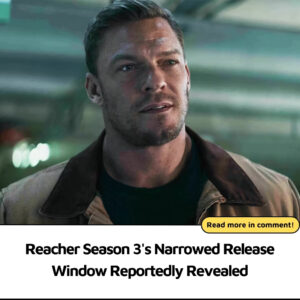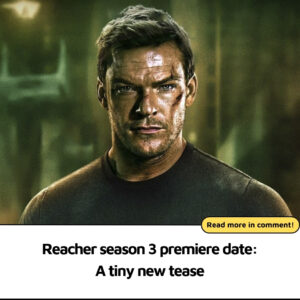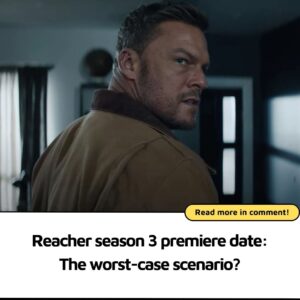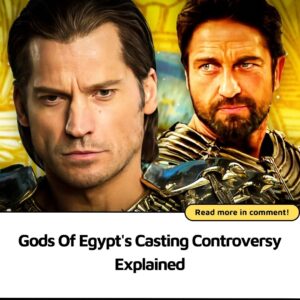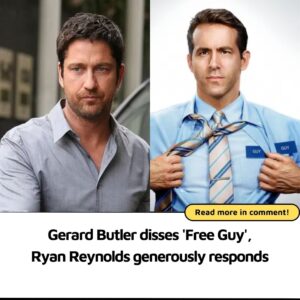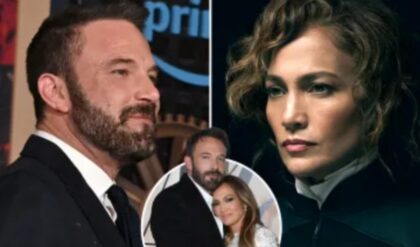Filmmaker Ric Roman Waugh on how Gerard Butler action film had to be rewritten when U.S. withdrew from Afghanistan
 Gerard Butler as Tom Harris and Navid Negahban as Mohammed “Mo” Doud in “Kandahar” (Open Road Films/Briarcliff Entertainment)
Gerard Butler as Tom Harris and Navid Negahban as Mohammed “Mo” Doud in “Kandahar” (Open Road Films/Briarcliff Entertainment)
“Kandahar” drops viewers into the heat of the Middle East as CIA operative Tom Harris (Gerard Butler) is first seen sabotaging an Iranian nuclear facility. Roman (Travis Fimmel), wants Tom to take on a second, more dangerous mission, and pairs him with Mohammed (Navid Negahban), a translator.
However, Tom’s cover is blown when Luna (Nina Toussaint-White), a journalist, reports the story. Suddenly, Luna’s life is in danger, and Kahil (Ali Fazal) who works for Pakistan’s Inter-Services Intelligence, wants revenge.
Director Ric Roman Waugh takes a slow-burn approach with this efficient thriller, saving most of its kinetic action scenes for the second half — after all the chess pieces are in place. As Tom is determined to make it home and keep Mohammed safe as well, they must travel from Herat to Kandahar while Kahil and others are in hot pursuit.
“Kandahar” is the third (and best) collaboration between Waugh and actor Gerard Butler who previously worked together on “Angel Has Fallen” and “Greenland.” While the politics do not overwhelm the story, there are double- and possibly triple-crosses as Tom and Mohammed encounter unsavory characters, such as Ismail (Ray Haratian), a warlord.
Waugh keeps the action engrossing as Tom engages in various chases and shootouts, with one shot using night vision being especially exciting. The filmmaker spoke with Salon about his new thriller.
Given that you have made several action films, what was your approach to “Kandahar,” which features various storylines, locations and action sequences?
My core mantra as a filmmaker is that I try to never have a character be an antagonist. In this case, it’s a region that has been stuck in cycle of violence for centuries. So how do you find the humanity in that? How do end up rooting for people you never thought you would root for?
And do you have empathy when they perish? When I read the script, I knew you had to feel everyone’s death in this film. It has to mean something. Whether the Taliban is coming after them, or other people who are doing their job and were supposed to return home to their families are no longer going to do that.
It was about really maintaining that humanity, and I loved the “Rashomon” point of view of this material that allows us to explore all these people and storylines. The hard part was not getting too in-depth into the complexity of the region.
What can you say about creating the action set pieces, such as the night vision sequence?
It started out with my first mandate. I’m not going to make this look dirty, dusty and desaturated. I wanted to show beauty of the region. We brought in the caramels, and I wanted to use primary colors. The women of Herat wear blue burkas.
When the Russians invaded, they brought this weird blue material, and since then, the [burkas] were blue; other regions still use black. At nighttime, in the desert, it’s black. Knowing what is going on with modern technology, they are not using the regular night vision, the “green,” which Iranians use, but the new delta force operators, the new CIA, and the new MI6, are using fusion technology now, and it combines infrared with thermal.
You can change the color patterns. When I found out you can do it in black and white, and you can see the desert at night, I thought, I’m going to make it look like Ansel Adams shot here. I wanted to show the beauty of the region in the nighttime.
This is your third collaboration with Gerard Butler. What observations do you have about working with him and building a film around him as a hero?
We’ve known each other a long time. I came on to reinvent his “Fallen” franchise in new way. I take the action hero and give him humanity and flaws. The comic book movie heroes are 10-feet-tall and bulletproof and impervious to pain. When you look back to the heroes in films in the ’70s and the ’50s, they were flawed individuals, and relatable, real people.
That was the fun aspect of “Angel Has Fallen” — this guy who is worried about hanging up his gun, dealing with real issues, and fighting with his own mortality. Gerry is not afraid to be sensitive and vulnerable and express himself in a three-dimensional way. In “Greenland,” we took the action hero away. He was very much an everyday man in extraordinary circumstances. He didn’t have any special skill set and had to do everything by his heart.
When I read Mitchell LaFortune’s script that became “Kandahar,” I flipped over it. It showed the humanity of the Middle East in multiple countries, and the cycle of violence that was going on. Gerry was the first person I thought of, and I got to make him a man of action but never to be action hero — even though he did have a special skill set. We made it authentic and grounded. It was inspired by true events.
The irony was we originally prepped it before the U.S. withdrawal of Afghanistan. We were in Saudi Arabia, and the Delta COVID variant shut the borders down. Then the withdrawal happened, so we rewrote the film to show not only the heartbreak of the region, but the warriors who fought for 20 years.
What was it all for? We wanted to bring empathy and that “all is lost” sensibility to it, and also the atonement. The scene we always maintained was one with these two men who just fought a helicopter in the middle of the desert.
They are coming to terms with the fact that neither of them really know their own families more than they know war. How much they have in common with one another even though they come from polar opposite places.
What did you know about the Middle East and black ops before you started making this film?
It starts with Mitchell LaFortune. He was in the DIA, which is [military] intelligence. He was based in Herat for a number of years. Then it was expanded to understand his experiences there with different factions. I knew the story I wanted to tell, but the more time I spent in Saudi Arabia, I felt like a journalist.
I felt there was a way I could absorb this place and be this outsider that is not desensitized and taking things for granted. I paid attention to every detail. It was loud. Five times a day, you hear the call to prayer, there are massive traffic noises, and within a couple weeks, you get completely accustomed to it. Tom would sit on a rooftop, and this kind of noise and din was normal to him.
But watching the clash of the ultra-conservative movement and the young progressive movement in Saudi Arabi, it was fun to bring that to Ali Fazal’s character, Kahil, who reports to a man who runs the ISI, which is the CIA in Pakistan.
His [boss] is a conservative, devout man who performs his prayers and does not live in sin smoking vape pens. Then you see Khalil meet with the Taliban, take off his turban, and put on the Gucci glasses, and he’s vaping and getting in a Range Rover with hip-hop. That happened around me.

Ali Fazal as Kahil Nazir in “Kandahar” (Open Road Films/Briarcliff Entertainment)
I found Kahil an interesting foil for Tom. I really loved a sequence where the two of them
“meet.” How did you work with Ali Fazal on his role?
We wanted Kahil to be the mirror of Tom, someone who lives in isolation and doesn’t know his family, and is addicted to war. His counterpart [Kahil], has to live the same way, but he doesn’t want that anymore. He is trying to find a way out. Kahil is on Tinder, trying to find love, because there is nothing in his life other than, on moment’s notice, he is on the hunt again.
We wanted the hunter and the hunted to be mirrors, but also specific to each man’s culture — not Westernizing Kahil too much but showing what a young Pakistani would be like versus a man like Tom from our Western world.
Mohammed is also a kind of mirror for Tom. He is a moral center of the film, and empathetic. How did you present his character?
There was a lot more with Mohammed’s character I wanted to show — here is a man who fought a country, and now has a bull’s-eye on his back. He is living as a refugee in America. He is similar to how Afghans and Iraqis and other people who come from conflict live [abroad.] He is trying to win his country back. The film became about Mohammed going back to find a loved one. He makes this barter with the devil to go do one last mission so he could get back under an alias to find his loved ones. But he is looking at a country where hope is gone. I would have loved another 10-15 minutes on that to explore more of who he was.
What are your thoughts about “Kandahar” being a story told through a white lens — both you as a filmmaker and Tom as a character?
It is what it is. We’ve been living with that layer for 20 years. I think that was important to show that and that Tom understands the responsibility of that. When he says, “We come to your country and tell you what to do, and how to behave, and then we leave you behind in ruins,” it was an important statement of how we keep getting into these police actions since Vietnam and try to do greater good and beat bad people down, but we leave these places in ruins.
Are we leaving ourselves in ruin? That lens was important to be told from a Western character invading these countries and being complicit in it. Yes, there is a privilege to it, but there is also an important message that we need to own up to and understand the human cost. Look at what is going on in Ukraine right now. This film speaks to the destruction that war does not only on a physical level, but on a mental level, and with a human cost, and the sacrifices of families behind it.
In what ways is your film political? Can folks read “Kandahar” as jingoistic?
I hope not. I don’t want to be Robert Redford, and I don’t want to be Oliver Stone. I don’t want to put my opinion in any film. If there are politics in it, the politics are real. The Pakistanis are dealing with the Taliban. But I do not intend to give you my opinion, or tell you how to fix it. That is never my job.
News
Reacher Season 3’s Narrowed Release Window Reportedly Revealed
SUMMARY Reacher season 3 could be released in early 2025. Sticking to a yearly release schedule could help Reacher grow its audience. This is especially true since Reacher has consistently high viewership similar to broadcast TV procedural hits. The release window for Reacher season 3 has…
Reacher season 3 premiere date: A tiny new tease
While there may not be a formal Reacher season 3 premiere date yet at Prime Video, there is something more that we can share! Previously, star Alan Ritchson had shared on Instagram that the action drama would not be back until 2025,…
Nicolas Cage Is ‘Terrified’ of AI and Got Digitally Scanned for Spider-Man Noir: ‘I Don’t Want You to Do Anything’ With My Face and Body ‘When I’m Dead’
Nicolas Cage said in an interview for The New Yorker that he is terrified of AI and is hoping recent body scans he had to do for two upcoming projects aren’t used as reference for AI technology to recreate him on screen after…
Reacher season 3 premiere date: The worst-case scenario?
We know that Reacher season 3 is coming at some point to Prime Video. Not only that, but filming is already done! A great deal of the groundwork has already been laid regarding the show’s future, and there is now just a…
Gods Of Egypt’s Casting Controversy Explained
SUMMARY Whitewashing of Egyptian gods with white actors led to a negative impact on Gods of Egypt. Lack of diversity in casting choices resulted in backlash, poor reviews, and financial failure. Movie’s failure at the box office emphasized the importance…
Gerard Butler disses ‘Free Guy’, Ryan Reynolds generously responds
Ryan Reynolds has offered a response to comments from Gerard Butler about his latest feature, ‘Free Guy’, and his other movies. Earlier this month, the ‘300’ star gave an interview to Unilad promoting it, and he included some scathing comments about Ryan Reynolds’ work….
End of content
No more pages to load
